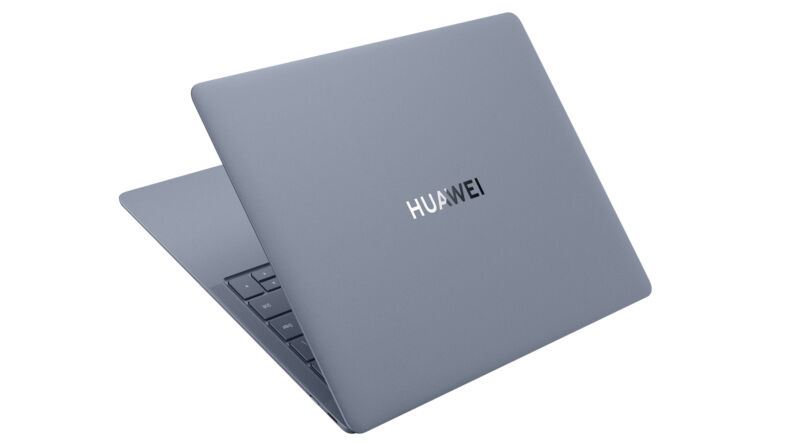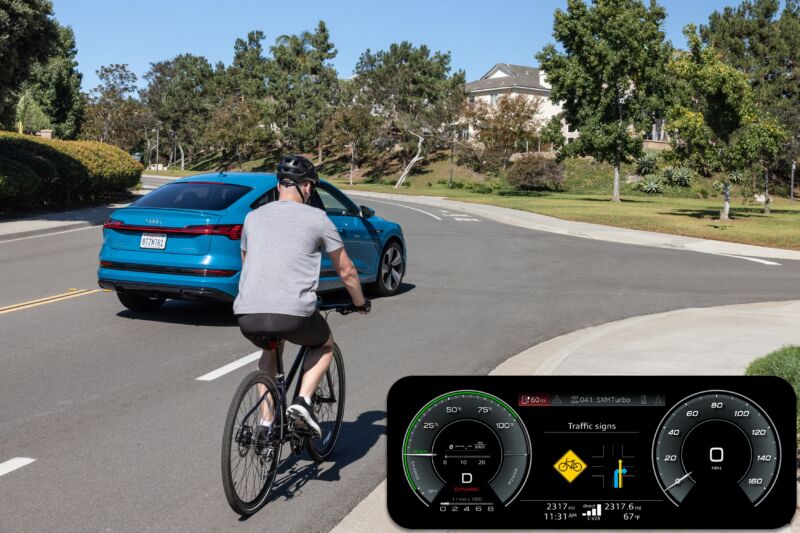
Enlarge / The new Chord Track feature. (credit: Apple)
If you watched yesterday's iPad-a-palooza event from Apple, then you probably saw the segment about cool new features coming to the iPad version of Logic Pro, Apple's professional audio recording software. But what the event did not make clear was that all the same features are coming to the Mac version of Logic Pro—and both the Mac and iPad versions will get newly numbered. After many years, the Mac version of Logic Pro will upgrade from X (ten) to 11, while the much more recent iPad version increments to 2.
Both versions will be released on May 13, and both are free upgrades for existing users. (Sort of—iPad users have to pay a subscription fee to access Logic Pro, but if you already pay, you'll get the upgrade. This led many people to speculate online that Apple would move the Mac version of Logic to a similar subscription model; thankfully, that is not the case. Yet.)
Both versions will gain an identical set of new features, which were touched on briefly in Apple's event video. But thanks to a lengthy press release that Apple posted after the event, along with updates to Apple's main Logic page, we now have a better sense of what these features are, what systems they require, and just how much Apple has gone all-in on AI. Also, we get some pictures.
Source: Ars Technica - All content | 8 May 2024 | 7:22 pm

Enlarge (credit: Getty Images)
Researchers on Wednesday reported critical vulnerabilities in a widely used networking appliance that leaves some of the world’s biggest networks open to intrusion.
The vulnerabilities reside in BIG-IP Next Central Manager, a component in the latest generation of the BIG-IP line of appliances, which organizations use to manage traffic going into and out of their networks. Seattle-based F5, which sells the product, says its gear is used in 48 of the top 50 corporations as tracked by Fortune. F5 describes the Next Central Manager as a “single, centralized point of control” for managing entire fleets of BIG-IP appliances.
As devices performing load balancing, DDoS mitigation, and inspection and encryption of data entering and exiting large networks, BIG-IP gear sits at their perimeter and acts as a major pipeline to some of the most security-critical resources housed inside. Those characteristics have made BIG-IP appliances ideal for hacking. In 2021 and 2022, hackers actively compromised BIG-IP appliances by exploiting vulnerabilities carrying severity ratings of 9.8 out of 10.
Source: Ars Technica - All content | 8 May 2024 | 5:35 pm

After reversing its positioning on remote work, Dell is reportedly implementing new tracking techniques on May 13 to ensure its workers are following the company's return-to-office (RTO) policy, The Register reported today, citing anonymous sources.
Dell has allowed people to work remotely for over 10 years. But in February, it issued an RTO mandate, and come May 13, most workers will be classified as either totally remote or hybrid. Starting this month, hybrid workers have to go into a Dell office at least 39 days per quarter. Fully remote workers, meanwhile, are ineligible for promotion, Business Insider reported in March.
Now The Register reports that Dell will track employees' badge swipes and VPN connections to confirm that workers are in the office for a significant amount of time.
Source: Ars Technica - All content | 8 May 2024 | 4:57 pm

Enlarge / In 1984, the year 2000 was so promising, students made entire games promising to take you there. (credit: Radio Student)
Software is almost impossibly easy to download, distribute, and access compared to 40 years ago. Everything is bigger, faster, and more flexible, but there's a certain charm to the ways of diskettes and cassettes that is hard to recapture. That doesn't mean we can't try.
By the time you read this, it's likely that Kontrabant 2 will have already hit the airwaves on Radio Študent in Slovenia. At 9:30 pm Slovenia time (UTC+2 in Daylight Savings Time), if you are tuned to 89.3 FM, hitting record on a cassette tape will capture a buzzing sound that will run until just over 50KB have been transmitted. If all went well, you can load the tape into your working ZX Spectrum or bring it to the Computer History Museum in Slovenia and use theirs to try it out.
Source: Ars Technica - All content | 8 May 2024 | 4:13 pm

Enlarge / A still image of a robotic quadruped armed with a remote weapons system, captured from a video provided by Onyx Industries. (credit: Onyx Industries)
The United States Marine Forces Special Operations Command (MARSOC) is currently evaluating a new generation of robotic "dogs" developed by Ghost Robotics, with the potential to be equipped with gun systems from defense tech company Onyx Industries, reports The War Zone.
While MARSOC is testing Ghost Robotics' quadrupedal unmanned ground vehicles (called "Q-UGVs" for short) for various applications, including reconnaissance and surveillance, it's the possibility of arming them with weapons for remote engagement that may draw the most attention. But it's not unprecedented: The US Marine Corps has also tested robotic dogs armed with rocket launchers in the past.
MARSOC is currently in possession of two armed Q-UGVs undergoing testing, as confirmed by Onyx Industries staff, and their gun systems are based on Onyx's SENTRY remote weapon system (RWS), which features an AI-enabled digital imaging system and can automatically detect and track people, drones, or vehicles, reporting potential targets to a remote human operator that could be located anywhere in the world. The system maintains a human-in-the-loop control for fire decisions, and it cannot decide to fire autonomously.
Source: Ars Technica - All content | 8 May 2024 | 3:59 pm

Enlarge / Prediction of the structure of a coronavirus Spike protein from a virus that causes the common cold. (credit: Google DeepMind)
Most of the activities that go on inside cells—the activities that keep us living, breathing, thinking animals—are handled by proteins. They allow cells to communicate with each other, run a cell's basic metabolism, and help convert the information stored in DNA into even more proteins. And all of that depends on the ability of the protein's string of amino acids to fold up into a complicated yet specific three-dimensional shape that enables it to function.
Up until this decade, understanding that 3D shape meant purifying the protein and subjecting it to a time- and labor-intensive process to determine its structure. But that changed with the work of DeepMind, one of Google's AI divisions, which released Alpha Fold in 2021, and a similar academic effort shortly afterward. The software wasn't perfect; it struggled with larger proteins and didn't offer high-confidence solutions for every protein. But many of its predictions turned out to be remarkably accurate.
Even so, these structures only told half of the story. To function, almost every protein has to interact with something else—other proteins, DNA, chemicals, membranes, and more. And, while the initial version of AlphaFold could handle some protein-protein interactions, the rest remained black boxes. Today, DeepMind is announcing the availability of version 3 of AlphaFold, which has seen parts of its underlying engine either heavily modified or replaced entirely. Thanks to these changes, the software now handles various additional protein interactions and modifications.
Source: Ars Technica - All content | 8 May 2024 | 3:45 pm

Enlarge / Huawei's Intel-powered Matebook X Pro has drawn criticism from US China hawks. (credit: Huawei)
The US crackdown on exports to Huawei now includes even stronger restrictions than the company has already faced. The Financial Times reports that Intel and Qualcomm have had their Huawei export licenses revoked, so Huawei will no longer be able to buy chips from either company.
The export ban has been around since 2020 and means that any company wishing to ship parts to Huawei must get approval from the government on a case-by-case basis. Sometimes these come with restrictions, like Qualcomm's license, which allowed it to ship smartphone chips to Huawei, but not "5G" chips. That led to Qualcomm creating special 4G-only versions of its 5G chips for Huawei, and the company ended up with 4G-only Snapdragon 888 phones in 2021.
Since then, Huawei has been working on its own Arm chips from its chip design division, HiSilicon. In April, the Huawei Pura 70 smartphone launched with an in-house HiSilicon Kirin 9010 SoC made at SMIC, a Chinese chip fab that is also facing export restrictions. With what is probably still a 7 nm manufacturing process, it's more of a 2020 chip than a 2024 chip, but that's still fast enough for many use cases.
Source: Ars Technica - All content | 8 May 2024 | 3:19 pm

Enlarge / A C-V2X bicycle can alert a C-V2X-enabled car to its presence—note the large yellow icon on the screenshot of the Audi's digital instrument display. (credit: Audi)
There's a fundamental flaw in current car safety tech: It's limited to line of sight. Or, perhaps, line of "sensing" is more accurate, because the way cameras and lidar work is to inspect the perimeter of a vehicle and use predictive algorithms to understand the motion of an object in relation to the motion of the vehicle itself. Which is good, because as carmakers have added elements such as pedestrian and cyclist detection, they're trying to prevent drivers from hurting the most vulnerable road users. And unfortunately this is necessary, because even though 2023 saw a slight reduction in drivers striking cyclists and pedestrians, according to the most recent data from the Governor's Highway Safety Association, since 2019 pedestrian fatalities are still up 14 percent—and cyclist deaths are up 50 percent since 2010.
That doesn't mean lidar and cameras have "failed," but because they rely on what the sensors can pick up, they cannot necessarily ID hazards (and alert drivers) as quickly as we need them to, particularly if that's a cyclist in your lane 300 feet down the road, just over the next rise. Yes, current sensing works well now with figuring out the pace of a traffic jam, and automatic emergency braking can step in to stop your car if you fail to. But for non-automotive obstacles, they're still limited.
For that, we need better tech, which is emerging and is called Connected Vehicle to Everything (C-V2X). The idea isn't that complicated. Boiled down, it's a chipset that operates on a portion of the cellular bandwidth, and vehicles with this tech embedded (say in an e-bike or car) monitor anything with a C-V2X chip as well as broadcast their own location at a pulse of 10 times a second. This precision location system would then warn a driver of a cyclist on the road ahead, even beyond line of sight, and in an emergency—possibly because a cyclist was right in a car's path—could prevent a collision.
Source: Ars Technica - All content | 8 May 2024 | 2:59 pm

Enlarge / The new M4 iPad Pro. (credit: Apple)
When Apple announced the Apple M4 chip during its iPad Pro event yesterday, it mentioned that the chip came with "up to" four high-performance CPU cores.
Those short, easily missable words always mean that there's a lower-end version of the chip coming that doesn't include that many CPU cores, and the tech specs page for the new iPad Pro has the full details: iPad Pros with 256GB or 512GB of storage use a version of the M4 with three high-performance CPU cores and six smaller efficiency cores. Only the models with 1TB and 2TB of storage have an M4 with all four high-performance CPU cores enabled.
The 256GB and 512GB models also ship with 8GB of RAM, where the 1TB and 2TB models come with 16GB of memory installed. Though these changes are clearly spelled out on the Tech Specs page, the actual configuration page for the iPad Pros in Apple's online store doesn't give any indication that upgrading storage also upgrades your CPU and RAM.
Source: Ars Technica - All content | 8 May 2024 | 1:32 pm

Enlarge (credit: Getty Images | nadla)
The Federal Communications Commission clarified its net neutrality rules to prohibit more kinds of fast lanes.
While the FCC voted to restore net neutrality rules on April 25, it didn't release the final text of the order until yesterday. The final text has some changes compared to the draft version released a few weeks before the vote.
Both the draft and final rules ban paid prioritization, or fast lanes that application providers have to pay Internet service providers for. But some net neutrality proponents raised concerns about the draft text because it would have let ISPs speed up certain types of applications as long as the application providers don't have to pay for special treatment.
Source: Ars Technica - All content | 8 May 2024 | 1:25 pm
Source: CNET News | 29 Jan 2019 | 12:07 am
Source: CNET News | 29 Jan 2019 | 12:06 am
Source: CNET News | 28 Jan 2019 | 11:31 pm
Source: CNET News | 28 Jan 2019 | 10:58 pm
Source: CNET News | 28 Jan 2019 | 8:57 pm
Source: CNET News | 28 Jan 2019 | 8:38 pm
Source: CNET News | 28 Jan 2019 | 8:31 pm
Source: CNET News | 28 Jan 2019 | 8:22 pm